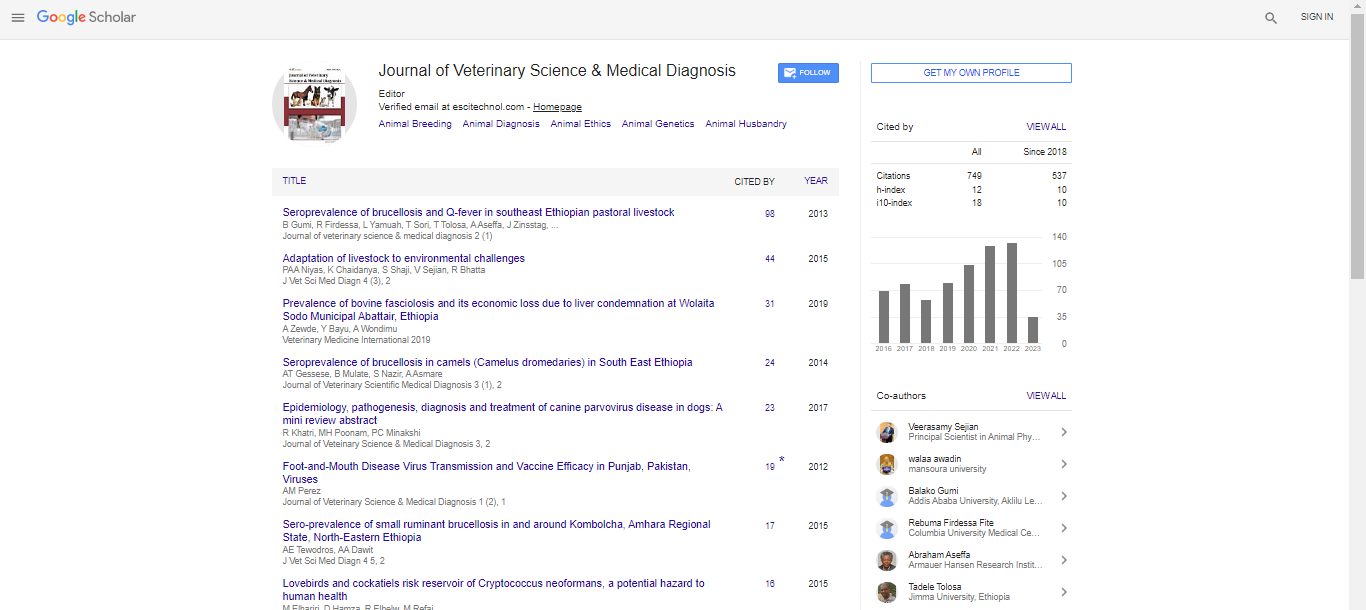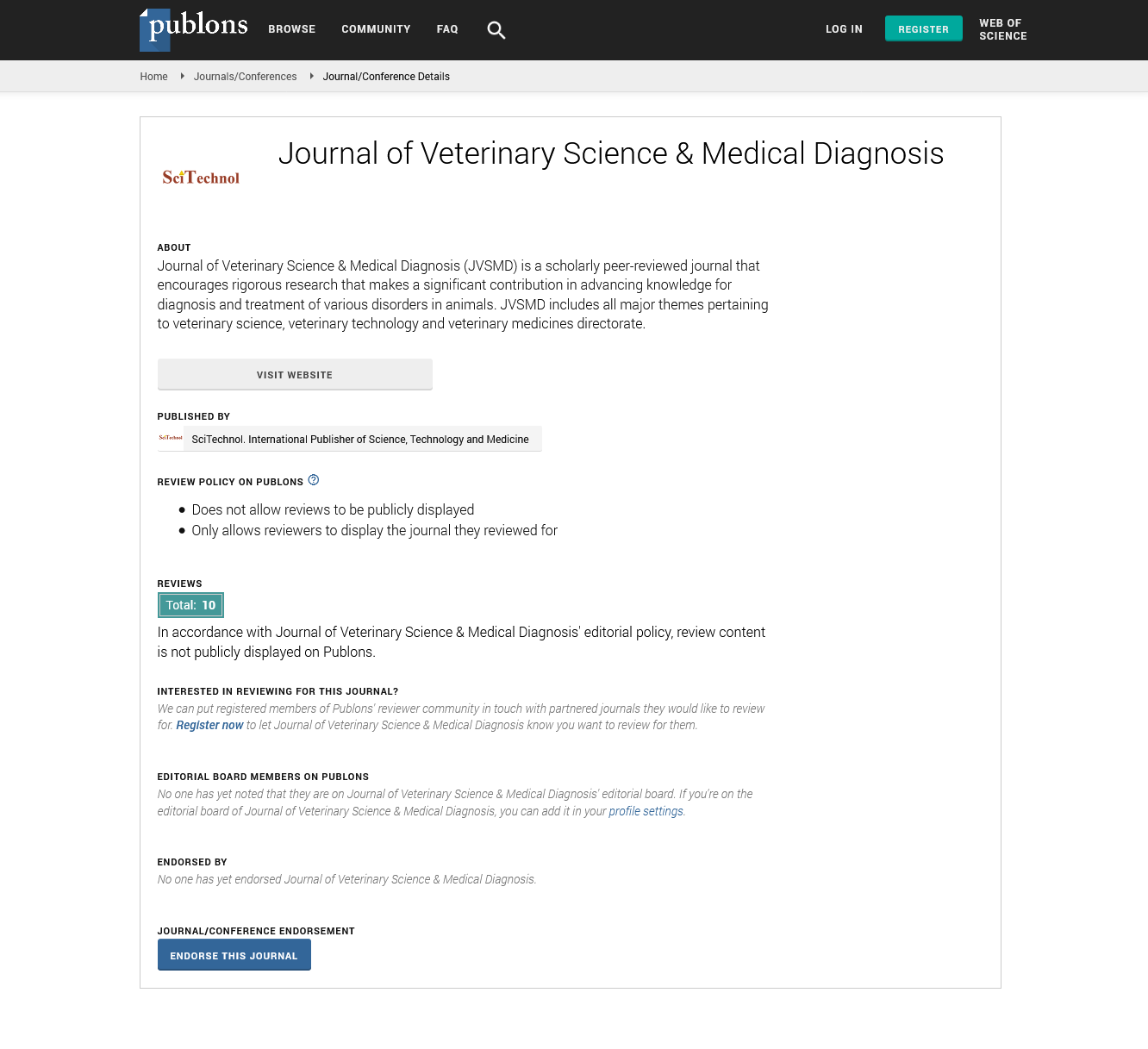Relationship between cattle cellular immunity and endotoxin levels in dust from cattle housing environments
Yong Heo, Hyoung Ah Kim, Katharine Roque, Eun Seob Song, Ravi Gautam and ChangYeol Kim
Catholic University of Daegu, South Korea
Catholic University of Korea, South Korea
: J Vet Sci Med Diagn
Abstract
Hazardous biochemical agents in animal husbandry indoor environments are known to promote the occurrence of various illnesses among husbandry workers and animals. The relationship between endotoxin levels in dust collected from Korean beef cattle farms and various immunological markers on bovine cellular immunity was investigated. Peripheral blood was obtained from 25 cattles from 5 different beef cattle farms in Korea. Concentration of total dust in indoor of the animal farms was evaluated using PVC membrane filter with 37 mm cassette at flow rate of 2.0 liters/min for 8 hours. Endotoxin levels in the total dust were determined by the Limulus amebocyte lysate kinetic method. Microbial air samples were collected by the use of cascade impactor onto Petri dishes with bacteria or fungi growth media. Cytokine production was evaluated through stimulation of peripheral mononuclear cells (106 cells/ml) with Concanavlin A (5 microgram/106 cells) for 72 hours in 5% CO2 incubator. Interferon-gamma versus interleukin-4 ratio, an immunological parameter for helper T cell subtype skewness, was substantially lower in cattles from the two farms with higher endotoxin concentrations (100.9±40.7 EU/m3) than the cattles from the three farms with lower endotoxin levels (17.7±8.3 EU/m3). Phenotyping analysis through FACS for peripheral mononuclear cells demonstrated significantly lower percentage of WC1+ gamma delta T cell, an important immune cell for protection against microbial infection, in cattles (9.7±1.7%) from the farms with higher endotoxin level than those (15.0±2.3%) from the farms with lower endotoxin level. Prevalent microorganisms were Gram positive bacteria; Staphylococcus lentus, S. chromogenes, Bacillus cereus, B. licheniformis, and Enterococcus faecalis, and Candida albicans and Acinetobactor lwoffi for fungi and Gram negative bacteria, respectively. Overall, these results suggest a probable negative association between dust endotoxin levels and cell-mediated immunity in Korean beef cattle. [supported by Rural Development Agency, project #PJ008678012016]
Biography
Yong Heo earned his DVM degree from Seoul National University in the year 1983 and has completed his PhD in Immunology in the year 1997 from State University of New York at Albany. He is a Full Professor at the Department of Occupational Health, Catholic University of Daegu, Korea. He has published more than 50 papers in reputed journals and has been serving as an Editorial Board Member of Journal of Immunotoxicology.
Email: yheo@cu.ac.kr
 Spanish
Spanish  Chinese
Chinese  Russian
Russian  German
German  French
French  Japanese
Japanese  Portuguese
Portuguese  Hindi
Hindi 
